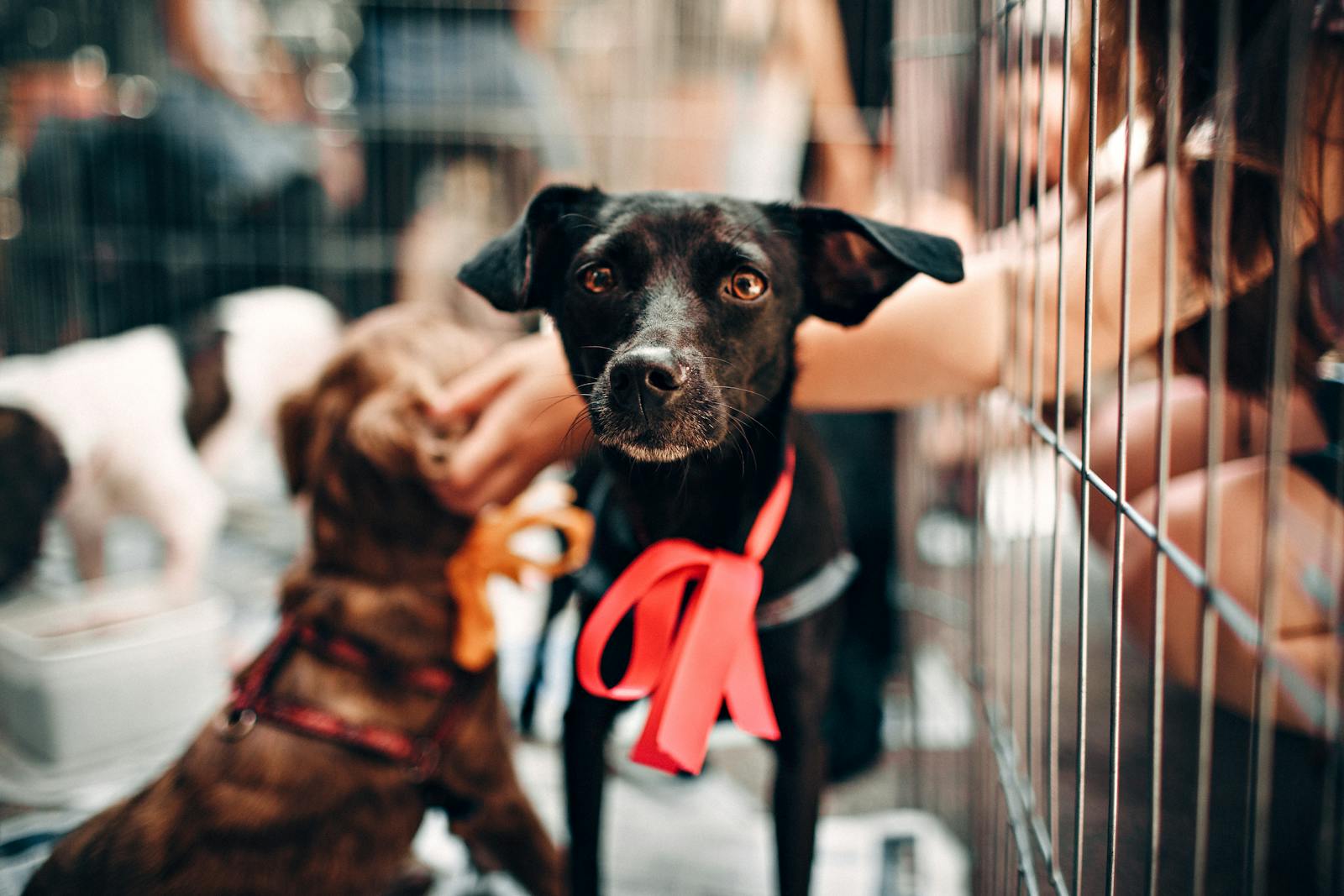Understanding Pet Ownership Laws: The Essential Guide for New Owners
Understanding Pet Ownership Laws: The Legal Framework
Pet ownership is more than a heartfelt passion for many individuals and families; it is a profound responsibility that comes with a legal framework designed to ensure the well-being of animals and the community. The adoption of pets brings joy, companionship, and an enriched life, but it also raises ethical and legal considerations that every pet owner should be aware of. Understanding pet ownership laws is crucial for responsible pet care, helping to protect both pets and their owners from potential legal pitfalls.
The Importance of Pet Ownership Laws
Pet ownership laws serve several essential purposes, including promoting responsible pet care, ensuring public safety, preventing animal cruelty, and protecting the rights of both animals and humans. These laws can encompass a wide range of issues, from licensing requirements and housing restrictions to leash laws, noise ordinances, and even regulations concerning the treatment and care of animals.
In a society that shares its environment with a multitude of species, it’s vital that pet owners understand their legal obligations—after all, responsible pet ownership fosters a harmonious community where animals and humans coexist safely and happily.
Types of Pet Ownership Laws
Pet ownership laws can be broadly categorized into several key areas:
1. Licensing and Registration
Many municipalities require pet owners to obtain licenses for their dogs and other pets. These licenses serve several purposes:
- Identification: A license can help reunite lost pets with their owners.
- Vaccination Assurance: Licensing often mandates vaccinations, particularly rabies shots, ensuring public safety.
- Regulatory Compliance: It helps local governments track pet populations and enforce laws regarding overpopulation and stray animals.
2. Leash and Containment Laws
Leash laws and containment regulations vary widely based on location. The primary goal of these laws is to protect both pets and people by:
- Preventing Dog Attacks: Leash laws decrease the likelihood of aggressive encounters between pets and pedestrians or other animals.
- Maintaining Community Standards: Many areas enforce leash laws in public spaces to ensure that pets do not disrupt the peace or cause accidents.
Pet owners should familiarize themselves with the leash laws specific to their communities, as violations can result in fines or other legal consequences.
3. Zoning and Housing Restrictions
In different regions, zoning laws may place restrictions on pet ownership in residential areas. Considerations may include:
- Breed Restrictions: Some communities have specific bans on certain dog breeds deemed dangerous.
- Number of Pets: Licensing laws may limit the number of pets an individual can own within their home, affecting everything from apartment living to suburban neighborhoods.
- Housing Policies: Renters may face additional rules depending on their landlord’s pet policy, including breed restrictions or additional pet deposits.
Being aware of these regulations is critical for renters and homeowners, as violating them could lead to eviction or legal action.
4. Animal Cruelty and Welfare Laws
Laws regarding the treatment of animals are in place to protect pets from abuse and neglect. Core aspects include:
- Minimum Care Standards: Regulations often require pet owners to provide essentials such as food, water, shelter, and veterinary care.
- Reporting Mechanisms: Many jurisdictions have systems in place for reporting suspected animal cruelty, which can include investigations and fines for violators.
Understanding these laws aids in fostering a culture of compassion and respect for animals throughout the community.
5. Pet Breeding and Sale Regulations
For those interested in breeding pets, various laws apply, emphasizing responsible breeding practices:
- Licensing for Breeders: Many states require breeders to obtain licenses, ensuring that they comply with specific welfare standards.
- Sale and Adoption Regulations: There are laws in place to regulate how pets can be sold or adopted, including requirements for clear documentation of health screenings and vaccinations.
These laws are designed to curb puppy mills and ensure that pets are bred and sold ethically.
Conclusion
Pet ownership is an enriching experience that also comes with legal responsibilities. From licensing and leash laws to animal cruelty protections and zoning regulations, understanding the comprehensive landscape of pet ownership laws is essential for every pet owner. It not only helps mitigate legal risks but also enhances the quality of life for pets and fosters a safe and harmonious community.
By adhering to these regulations, you can ensure that both you and your pet lead happy, fulfilling lives together. If you have any questions or experiences related to pet ownership laws, feel free to share them in the comments below! Your insights could help fellow pet owners navigate their legal responsibilities more effectively.

Types of Pet Ownership Regulations
As previously highlighted, being a responsible pet owner not only means providing love and care for your beloved animal but also abiding by local regulations that govern pet ownership. Knowing these rules can save you from potential legal issues and ensure a happier life for you and your pet. Below are several key types of regulations that pet owners should be fully aware of.
1. Licensing Requirements
Overview: Licensing is a legal requirement in many areas for pet owners, especially for dogs. By obtaining a license, pet owners validate that they are responsible and comply with local laws concerning pet ownership.
Key Points:
- Identification: A pet license often carries essential information, making it easier for animal control agencies to reunite lost pets with their owners.
- Public Health: Licensing systems typically require proof of vaccinations, particularly for rabies, helping to ensure community health.
- Regulatory Compliance: Local governments use licensing to monitor the pet population, assisting in controlling overpopulation and reducing strays.
Examples by Jurisdiction:
- In Los Angeles County, California, dog owners must obtain a license annually, and failure to do so can lead to a fine of up to $500.
- Conversely, in Owensboro, Kentucky, dogs must be licensed by four months of age, with a penalty of $25 for non-compliance.
2. Microchipping Regulations
Overview: Microchipping involves implanting a small electronic chip under the pet’s skin that serves as a permanent identification method.
Key Points:
- Permanent Identification: Microchips greatly increase the chances of reuniting lost pets with their owners, as they contain unique identification numbers linked to the owner’s contact information.
- Legislative Mandates: Certain jurisdictions have made it mandatory for pets to be microchipped as part of licensing procedures.
Examples by Jurisdiction:
- In California, newly adopted animals from shelters are required to be microchipped before adoption.
- On the other hand, in Florida, there are no state-wide mandates, but some cities, such as Boca Raton, have ordinances requiring microchipping for pets.
3. Vaccination Laws
Overview: Vaccinations are essential not only for the health of your pet but also for public health. Specific vaccines, such as rabies, are often legally mandated.
Key Points:
- Public Safety: Vaccination laws help control the spread of infectious diseases that can affect not only pets but also humans.
- Documentation: Owners are generally required to maintain proof of vaccination, which can be requested by authorities.
Examples by Jurisdiction:
- In New York City, all dogs must be vaccinated for rabies by four months of age, with penalties for non-compliance potentially reaching up to $1,000.
- In contrast, North Dakota does not have a state mandate for pet vaccinations but encourages them for overall pet health.
4. Breed-Specific Legislation
Overview: Some regions implement specific laws that regulate or ban ownership of certain dog breeds, often those perceived as dangerous.
Key Points:
- Community Safety: These regulations aim to reduce the likelihood of dog attacks and ensure safer interactions among pets and the public.
- Variation by Region: The types of breeds restricted can differ significantly across jurisdictions, leading to confusion for owners.
Examples by Jurisdiction:
- Cities like Miami, Florida, have outright bans on breeds such as Pit Bulls and Rottweilers, imposing strict penalties for violations.
- Meanwhile, cities in Ohio may impose restrictions but still allow ownership of certain breeds with specific requirements, such as insurance.
5. Animal Welfare and Care Laws
Overview: These regulations stipulate the minimum care standards pet owners must provide, ensuring that animals receive adequate food, water, shelter, and medical attention.
Key Points:
- Minimum Care Standards: Laws often mandate that pets must not be kept in inhumane living conditions and must have access to veterinary care.
- Reporting Violations: Communities often have reporting mechanisms for suspected neglect or abuse.
Examples by Jurisdiction:
- In California, animal cruelty laws stipulate that pets must have adequate shelter and sustenance, with severe penalties for neglect.
- In Washington State, specific laws address the treatment of farm and domestic animals, emphasizing that negligence can result in legal repercussions, including fines or even imprisonment.
In summary, understanding the types of pet ownership regulations is vital to ensure responsible operation of pet ownership and to avoid potential legal issues. Pet owners should take time to familiarize themselves with the laws applicable in their jurisdiction, adjusting their practices accordingly to promote the welfare of their pets and community harmony.

Understanding Breed-Specific Legislation
As pet owners navigate the complex landscape of pet ownership laws, one pressing issue comes to the forefront: breed-specific legislation (BSL). This form of law often targets certain dog breeds perceived to pose a higher risk of aggression or danger. It raises significant concerns for responsible pet owners and potential adopters, as the implications of such laws can ripple through communities, influencing not just the lives of the pets but also the lives of their owners.
What is Breed-Specific Legislation?
Breed-specific legislation is a set of laws or regulations that restrict or ban certain dog breeds deemed dangerous. These laws vary widely between jurisdictions and typically focus on breeds that, based on history or media portrayal, are perceived as more likely to engage in aggressive behavior. Primarily, BSL targets breeds such as:
- Pit Bull Terriers
- Rottweilers
- Doberman Pinschers
- German Shepherds
- Chow Chows
The rationale is often driven by public safety concerns, with lawmakers aiming to reduce dog attacks and enhance overall community well-being. However, critics of BSL argue that the legislation is not effective in preventing attacks and that it unfairly targets specific breeds, disregarding the behavior of individual dogs.
The Impact of BSL on Breeds and Owners
The repercussions of breed-specific legislation extend beyond the breeds themselves; they affect a wide range of stakeholders, including responsible owners, animal shelters, and the general community. Here are some key impacts:
- Increased Euthanasia Rates: Breed-specific laws can lead to higher euthanasia rates for certain breeds in shelters, as potential adopters may be unwilling to adopt a breed that is restricted in their area. Animal welfare organizations have cited instances where adoptable pets are left homeless due to these laws.
- Insurance Complications: Pet owners with restricted breeds often face challenges obtaining homeowners’ insurance. Some insurance companies will refuse coverage or charge higher premiums for homes that house specific breeds. This financial burden can be significant for families who have invested time and love into their pets.
- Housing Restrictions: Renters with breeds that fall under BSL may struggle to find pet-friendly housing. Some landlords explicitly state ‘no pit bulls’ or ‘no Rottweilers’ in lease agreements, often based on fear rather than individual dog behavior. This can force responsible owners to relocate or give up their pets, leading to further abandonment issues.
- Community Divide: Breed-specific legislation can create tension within communities. Owners of the targeted breeds may face public stigma and discrimination, which can foster an adversarial relationship between breed advocates and those who support BSL. Communities can become polarized, with differing opinions on the effectiveness and fairness of these laws.
Notable Examples of BSL in Action
Several regions around the world have enacted breed-specific legislation, with varying degrees of impact and controversy. Some notable examples include:
- Denver, Colorado: Denver has one of the most well-known bans on pit bulls. Pet owners who reside within city limits are required to surrender their pit bulls to animal control. Advocates argue that the ban has not significantly improved public safety; rather, it has forced many loving families to relinquish their pets.
- Ontario, Canada: Ontario’s Dog Owners’ Liability Act includes a ban on pit bulls, which has been enforced since 2005. The legislation mandates that any pit bull found within the province is subject to seizure and potentially euthanasia. Despite these measures, dog bite statistics have not shown a significant decline, leading to critiques of the law’s effectiveness.
- Miami-Dade County, Florida: Miami-Dade County has a long-standing ban on pit bulls as well, leading to a considerable challenge for local pet rescuers and shelters trying to find homes for displaced breeds. Advocates argue that the law has led to financial strains on local shelters and has not improved the safety perceived by the public.
What Pet Owners Should Know
For pet owners living in areas with breed-specific legislation, it’s essential to stay informed and proactive. Here are actionable tips for navigating breed-specific laws:
- Research Local Laws: Pet owners must familiarize themselves with the specific laws and regulations in their area. Local government websites or animal control offices are good starting points.
- Explore Alternatives: If you are considering adopting a breed that may be restricted, consider reaching out to shelters or rescue organizations about breed-neutral policies or less common breeds that may fit your lifestyle.
- Advocate for Change: Individuals concerned about the implications of these laws can engage in advocacy work. Educating others about responsible dog ownership and promoting breed-neutral legislation can raise awareness and contribute to more effective, community-driven solutions.
- Invest in Training: Regardless of breed, investing in proper training and socialization can significantly impact a dog’s behavior. Training not only helps to mitigate any breed-specific concerns but also fosters positive relationships between dogs and the wider community.
Understanding breed-specific legislation is vital for pet owners and prospective adopters alike. As community members, navigating these laws thoughtfully can help foster a safer, more accepting environment for all breeds.

Leash and Restraint Laws: Understanding Your Responsibilities
Leash laws and requirements related to keeping pets restrained in public spaces play a critical role in responsible pet ownership. These regulations are designed not only to ensure the safety of pets but also to protect the public and promote harmonious interactions within communities. Understanding these laws is crucial for pet owners, as violations can lead to fines or more severe consequences.
The Purpose of Leash Laws
Leash laws serve several key purposes that benefit both pets and the community at large:
- Safety for Everyone: Leash laws help prevent dog attacks and accidents by ensuring that pets are under the control of their owners at all times. There is considerable evidence supporting the idea that dogs on leashes are less likely to get into scuffles, either with other pets or with people. For instance, a study showed that areas with strict leash laws experienced a significant decrease in reports of dog-related incidents.
- Public Peace and Order: Keeping pets leashed maintains community standards and promotes a peaceful environment in public spaces. Pets running freely can cause social disruptions, whether they are barking at passersby or chasing after joggers and cyclists. By adhering to leash laws, pet owners contribute to a positive outdoor experience for everyone involved.
- Protection for the Environment: Unrestrained pets can endanger local wildlife, damage property, or leave messes that can detract from natural areas. Leash laws support environmental stewardship by ensuring that pets do not roam freely, which can create issues in parks and other public spaces.
Variations in Leash Laws
Leash laws vary widely from one location to another, and pet owners should be aware of the specific regulations that apply in their community:
- General Leash Requirements: In many urban areas, dogs are required to be on a leash at all times when in public spaces. Some regions specify a maximum length for leashes, typically ranging from 4 to 6 feet.
- Designated Off-Leash Areas: Some municipalities provide designated off-leash parks where dogs can roam freely. While these are great spaces for socialization and exercise, adherence to signage and park rules is essential to ensure the safety of all users.
- Exceptions and Special Rules: Certain locations may have specific exceptions for service animals, which are permitted to be off-leash under ADA regulations. Additionally, some communities might enforce stricter leash laws for particular breeds deemed dangerous or in areas with high foot traffic.
- Penalties for Non-Compliance: Familiarize yourself with local laws regarding leash violations. Penalties can include fines ranging from minimal amounts to substantial charges depending on the severity of the violation or if the pet has previously caused issues.
The Benefits of Proper Restraint
Implementing appropriate restraint practices extends beyond mere legal compliance. Here are some tangible benefits that arise from keeping your pet leashed or restrained in public places:
- Enhanced Control: Using a leash provides direct control over your pet, reducing the risks of escape and enabling you to prevent any unwanted interactions. Leashing your pet ensures that you can mitigate their behavior in unpredictable situations, which is especially important in crowded or unfamiliar environments.
- Improved Socialization: A leash can help improve your pet’s social skills, allowing for controlled introductions to other animals and people. This is particularly beneficial for young or timid pets, as it provides them the opportunity to observe and gradually acclimate to their surroundings.
- Health and Well-Being: Regular walks on a leash can boost your pet’s physical health, ensuring they receive adequate exercise while also allowing them to engage with their environment safely. Leash laws encourage pet owners to make interactive walks a part of their routine, enhancing the physical and emotional well-being of both owner and pet.
Community Involvement and Awareness
As a responsible pet owner, being engaged with the community regarding leash laws is essential. Here are ways to get involved:
- Stay Informed: Keep up with changes to leash laws in your community through local news, community boards, or pet owner associations. Knowledge of updates or modifications will help maintain compliance.
- Participate in Local Events: Many communities host events focused on responsible pet ownership, which may include organized leash training sessions or workshops covering leash laws. Participating can enrich your experience as a pet owner and contribute positively to your neighborhood.
- Promote Responsible Ownership: Engage with fellow pet owners to promote leash law awareness. Sharing the importance of these laws fosters a sense of community responsibility and empowers others to act as stewards for a safe and peaceful living environment.
By understanding and abiding by leash and restraint laws, pets can thrive within their communities, and pet owners can contribute positively to public safety and community well-being.

Noise and Disturbance Laws: Managing Pet Noise
As the bond between humans and animals strengthens, so do the responsibilities that accompany pet ownership. One issue that frequently arises in residential communities is noise disturbances caused by pets, particularly barking dogs. These disturbances can lead to tension between neighbors and even potential legal repercussions if not addressed properly. Understanding the laws surrounding noise disturbances, especially those caused by barking dogs, is vital for ensuring a peaceful coexistence with both pets and neighbors.
Understanding Noise Ordinances
Noise ordinances are laws enacted by local governments to regulate noise levels in residential areas, ensuring a comfortable environment for all residents. These laws can vary significantly from one municipality to another, but they typically include guidelines on acceptable noise levels, times when noise must be minimized, and specific rules regarding barking dogs.
Pet owners should familiarize themselves with their local noise ordinances, as violations can lead to fines or even legal action. Here are some common elements often found in local noise regulations:
- Decibel Limitations: Many ordinances specify maximum permissible decibel levels for sounds. Barking dogs may be subjected to these limits.
- Quiet Hours: Some communities have designated quiet hours—often late at night or early in the morning—during which all noise, including barking, must be kept to a minimum.
- Habitual Offenders: Some laws specifically target “habitual” noise offenders, which can be defined as dogs that bark continuously or excessively regularly.
Potential Consequences for Noise Violations
The penalties for violating noise ordinances can vary significantly based on the severity of the disturbance and local laws. Common potential consequences include:
- Warnings: For first-time offenders, many local governments issue a warning to the pet owner, detailing the specific violation and offering guidance on how to resolve the issue.
- Fines: Repeated violations often lead to fines, which can range from moderate to substantial amounts, depending on local regulations. Fines may increase for continued noncompliance.
- Legal Action: In severe or repeated cases, neighbors may pursue civil action against the pet owner, seeking a restraining order or even damages.
- Bans or Restrictions: Some municipalities may impose additional restrictions on pet ownership for those who frequently violate noise ordinances, including limits on the number of pets or mandatory noise-reducing measures.
Tips for Pet Owners to Comply with Noise Laws
To avoid falling afoul of noise regulations, pet owners can take several proactive steps to manage barking and other disturbances from their pets. Here are some actionable tips:
- Training and Socialization: Invest time in training your dog to minimize excessive barking. Socialization with other animals and people can help reduce anxiety that often triggers barking.
- Interactive Toys: Provide stimulating toys or engage in regular playtime to keep your pet occupied. Bored dogs are more likely to vocalize excessively.
- Desensitization: Gradually expose your pet to the triggers that lead to barking (e.g., other dogs, doorbells, etc.) and reward them for remaining calm.
- Soundproofing: If possible, create a quiet environment for your pets, blocking outside noise that may lead them to bark.
- Regular Exercise: Ensure that your dog receives ample exercise, as a tired pet is often a quieter pet.
Real-World Examples and Data
In recent studies, noise disturbances have demonstrated a significant impact on community relationships. A survey conducted by the American Pet Products Association found that approximately 30% of pet owners have received complaints from neighbors about their pets’ noise levels. Communities with strict noise ordinances reported higher incidences of neighborly disputes, emphasizing the importance of compliance and understanding local laws.
Moreover, an analysis of municipal court records in urban areas indicated that noise complaints are among the top three issues leading to litigation between neighbors. This data highlights how crucial it is for pet owners to manage noise levels effectively.
By taking these steps, pet owners can foster a more harmonious living environment and maintain good relationships with their neighbors. Addressing noise disturbances proactively not only improves community relations but also ensures that pets can live comfortably without fear of legal repercussions.

The Role of Animal Control and Welfare Laws in Protecting Pets
Animal control and welfare laws play a crucial role in safeguarding the rights of pets, ensuring their humane treatment, and promoting a just society. These laws serve to protect vulnerable animals while also holding pet owners accountable for their actions. Understanding these regulations is vital for responsible pet ownership and helps create a community that prioritizes the humane treatment of animals.
Understanding Animal Welfare Laws
Animal welfare laws are implemented to prevent cruelty and neglect and to establish standards for the humane treatment of pets throughout their lives. Key components of these laws include:
- Definition of Cruelty: Animal welfare laws often define what constitutes animal cruelty, which can include abandonment, physical mistreatment, and neglect.
- Minimum Care Standards: These laws set forth requirements for pet owners, outlining basic needs such as food, water, shelter, and veterinary care. Violating these standards can lead to serious legal consequences.
- Enforcement Mechanisms: Local animal control authorities and humane societies are often tasked with enforcing animal welfare laws. This includes responding to reports of abuse and conducting investigations.
Obligations Pet Owners Have
As a pet owner, you have specific obligations under animal control and welfare laws. Understanding these responsibilities is crucial to ensuring your pet’s well-being while adhering to legal requirements.
- Providing Proper Nutrition:
- Pets require a healthy diet that meets their nutritional needs. This includes providing appropriate food for their age, breed, and health conditions.
- Malnourishment or failure to provide sufficient food can result in charges of neglect.
- Ensuring Adequate Shelter:
- Pets must be provided with a safe and suitable environment that protects them from the elements. This includes adequate shelter from extreme temperatures, rain, and tempest.
- Additionally, the shelter must be clean, dry, and appropriate for the animal’s size and type.
- Access to Clean Water:
- Access to fresh, clean water is a fundamental right for all pets. Pet owners must ensure that their animals have constant access to potable water, particularly during hot weather.
- Water deprivation can lead to severe health issues and may violate local animal welfare laws.
- Medical Attention:
- Regular veterinary care, including vaccinations and health check-ups, is obligatory for pet owners. This not only maintains your pet’s health but is also often mandated by law.
- Failing to provide necessary medical attention can lead to severe consequences, especially in cases of preventable diseases or ongoing health issues.
- Socialization and Exercise:
- While not explicitly mandated by all animal welfare laws, providing regular socialization and exercise is essential for a pet’s mental and physical well-being.
- Neglecting these needs can lead to behavioral issues, impacting both the animal’s quality of life and the community.
Reporting and Enforcement
Animal control laws often come equipped with reporting and enforcement mechanisms to ensure compliance and hold violators accountable. These may include:
- Hotlines and Reporting Systems: Many local jurisdictions provide hotlines for reporting suspected animal cruelty or neglect, allowing concerned citizens to act if they see a pet in distress.
- Inspections and Investigations: Animal control officers or humane societies often conduct investigations based on reports of abuse or neglect. Pet owners found in violation of animal welfare laws may face fines, court appearances, or even criminal charges.
Community Involvement
Engaging in the community can further bolster the effects of animal control and welfare laws. Pet owners can play a significant role by:
- Advocating for Local Laws: Being aware of and advocating for local animal welfare laws helps to elevate community standards for pet care.
- Participating in Education Initiatives: Many animal control organizations offer educational programs aimed at promoting responsible pet ownership and the importance of animal welfare.
- Volunteering: Supporting local shelters, rescues, or animal control initiatives can create a significant positive impact on the lives of pets in your community.
In sum, animal control and welfare laws establish a robust framework that supports the humane treatment of pets while also outlining the responsibilities of pet owners. By understanding and adhering to these laws, individuals can contribute to a safer and more compassionate environment for all animals.

Responsibilities of Pet Owners: Fostering Community Relations and Adhering to Legal Obligations
As a pet owner, your commitment extends beyond simply providing food, water, and shelter. It encompasses legal, ethical, and social responsibilities that are vital for the well-being of your pet and the community at large. When pet owners take their responsibilities seriously, they contribute to creating a safe and harmonious environment for all living beings. Let’s explore the essential responsibilities of pet owners in relation to laws, including proper training, socialization, and adherence to community guidelines.
Proper Training
One of the primary responsibilities of a pet owner is to ensure proper training of their pets. Training involves teaching pets basic commands and good manners, which can minimize behavioral issues and enhance the pet-owner bond. Moreover, it plays a critical role in complying with various laws and community guidelines. Here are some key points regarding proper training:
- Adherence to Local Laws: Many jurisdictions require pet owners to control their pets’ behavior, particularly dogs. Owners are responsible for preventing their pets from displaying aggressive behavior in public, reducing the risk of incidents that could lead to legal repercussions.
- Socialization: Training should not merely focus on obedience but also involve socialization. Exposing pets to different environments, people, and other animals can help them become well-adjusted members of society.
- Community Impact: Well-trained pets contribute to a positive perception of pet ownership within the community. An aggressive or poorly-behaved pet can foster fear and resentment among neighbors, potentially leading to stricter leash laws or even breed bans.
By investing in proper training, you not only fulfill your legal obligations but also enhance your pet’s quality of life.
Socialization
Socialization is another crucial aspect of responsible pet ownership that intersects with legal responsibilities. It involves introducing pets to various stimuli in a controlled manner, helping them learn how to interact with different people, animals, and environments. The ramifications of socialization extend beyond individual pets and influence broader community dynamics:
- Public Safety: Pets that are well-socialized are less likely to exhibit fear or aggression, reducing the chances of dangerous encounters with people and other animals. This not only protects your pet but also helps maintain a safer community.
- Encouraging Positive Interactions: Socialized pets are generally more comfortable around other dogs and people, leading to enhanced interactions during walks, at parks, and in other public spaces. This eases community tension and fosters a pet-friendly environment.
- Legal Compliance: Some municipalities have laws requiring that dogs be socialized to prevent canine aggression. Understanding and following these regulations can prevent legal issues and enhance your dog’s overall behavior.
Ultimately, socialization contributes to a better quality of life for pets and their owners, positively affecting community perceptions of pets.
Adhering to Community Guidelines
Community guidelines often dictate the behavior of pets in shared spaces, and abiding by these regulations is a vital responsibility for pet owners. Here are some community guidelines that every pet owner should be aware of:
- Leash Laws: Most urban areas require pets to be leashed in public spaces. Respecting leash laws not only ensures that your pet is safe but also curtails potential confrontations with other animals and people. Failing to adhere to leash laws can result in fines and even loss of pet ownership privileges in certain areas.
- Waste Management: Many communities impose regulations around cleaning up after pets. Not only is this a legal requirement, but it also reflects a pet owner’s respect for their fellow citizens. Carrying waste bags and ensuring that your pet’s waste is disposed of properly contributes to a clean community environment and enhances relationships between pet owners and non-pet owners.
- Limitations on Number of Pets: Communities may have guidelines regarding the number of pets a household can own. Familiarizing yourself with these regulations can prevent issues like overcrowding, which can lead to health and welfare concerns for your pets.
By respecting community guidelines, pet owners demonstrate that they are responsible and considerate members of society.
Building Positive Community Relations
Responsible pet ownership profoundly impacts community relations, creating a nurturing atmosphere for both humans and animals. The actions of pet owners can either contribute to or detract from the community’s overall vibe. Here are some strategies for fostering positive relations:
- Participate in Local Events: Engaging in community events such as pet parades, dog shows, or adoption drives can strengthen the bond between pets and neighbors. These gatherings foster camaraderie and celebrate the joys of pet ownership.
- Educate Others: Share your knowledge about responsible pet ownership and local laws with fellow pet owners and even non-pet owners. Offering insights on training and socialization can create a more informed community.
- Advocate for Responsible Ownership: Encourage other pet owners to adhere to laws and best practices, contributing to a culture of care and responsibility that enhances the lives of all community members.
Ultimately, responsible pet ownership fosters goodwill among neighbors, reduces conflicts, and encourages a cooperative relationship between pet owners and the wider community.

Resources and Support for New Owners
Navigating pet ownership laws can feel overwhelming at times, but fortunately, there are numerous resources and support systems available to help new pet owners understand their rights and obligations. Connecting with these resources is invaluable for compliance and responsible pet ownership. Here’s a guide to some of the essential local and online resources available for pet owners.
1. Local Animal Control Offices
One of the first places new pet owners should turn to for information is their local animal control office. These offices are responsible for enforcing pet ownership laws and can provide vital information about:
- Licensing Requirements: Understand how to properly license your pet and the specific documentation needed.
- Regulations: Get acquainted with your community’s leash laws and any zoning restrictions that may apply to pet ownership.
- Reporting Issues: Learn how to report animal cruelty or file complaints about stray animals or noise disturbances.
A quick search on your local government’s website can point you to the contact information for your community’s animal control office.
2. Veterinary Clinics and Animal Shelters
Veterinary clinics and animal shelters are excellent resources not just for pet health, but also for legal advice and community resources. Many have staff who are knowledgeable about:
- Local Laws: Vets and shelter staff often have experience navigating pet ownership laws and can guide you on compliance.
- Community Resources: They can provide referrals to local organizations or legal resources if you need further assistance.
Consider establishing a relationship with a local veterinarian not only for your pet’s health but also as a source of knowledge about the pet ownership landscape in your area.
3. Legal Advice Websites
For more complex legal questions regarding pet ownership, various online legal resources can be extremely beneficial. Websites such as:
- Nolo.com: This site offers various articles and guides on pet ownership laws and responsibilities, providing clear explanations and examples of legal issues.
- Avvo.com: Avvo connects you with lawyers who can answer specific legal questions, including issues related to pet ownership.
These platforms can empower you with legal knowledge and help you understand your rights, ensuring that you’re fully compliant with local laws.
4. Community Groups and Online Forums
Joining a community group or an online forum dedicated to pet ownership can also provide immense support and education. Platforms such as:
- Meetup.com: Search for local pet groups and events that allow you to connect with other pet owners and share experiences.
- Facebook Groups: Many local communities have open groups where pet owners share advice, local pet regulations, and resources.
Engaging with fellow pet owners can facilitate a collaborative knowledge-sharing environment, helping you learn from others who have faced similar challenges.
5. Animal Welfare Organizations
Numerous nonprofit organizations work to ensure the welfare of animals and educate pet owners about their responsibilities. Organizations such as:
- The Humane Society: Offers a wealth of resources on pet care and legislation related to animal welfare.
- ASPCA: Provides information about animal cruelty laws and how to report suspected cases, as well as educational resources on responsible pet ownership.
These organizations often have local chapters that can provide personalized assistance and information relevant to your area.
Conclusion
Familiarizing yourself with available resources and support systems is essential for every new pet owner. By reaching out to local animal control offices, veterinary clinics, legal advice websites, community groups, and animal welfare organizations, you can equip yourself with the knowledge and tools necessary for responsible and compliant pet ownership. A well-informed owner contributes to the welfare of both their pet and the broader community.
news via inbox
Nulla turp dis cursus. Integer liberos euismod pretium faucibua





